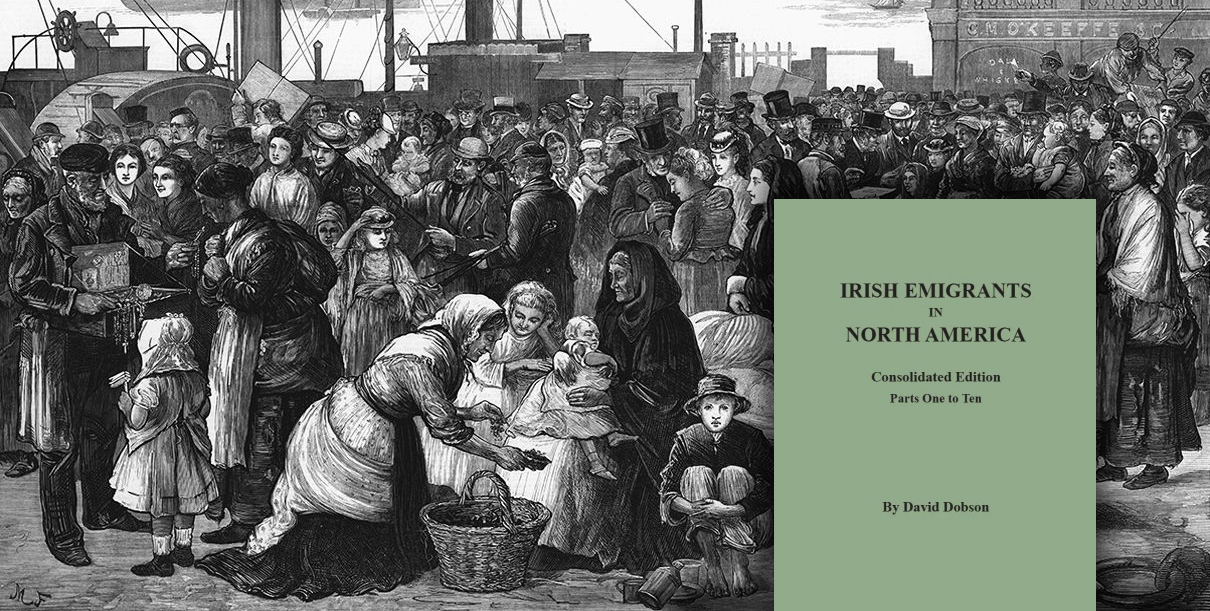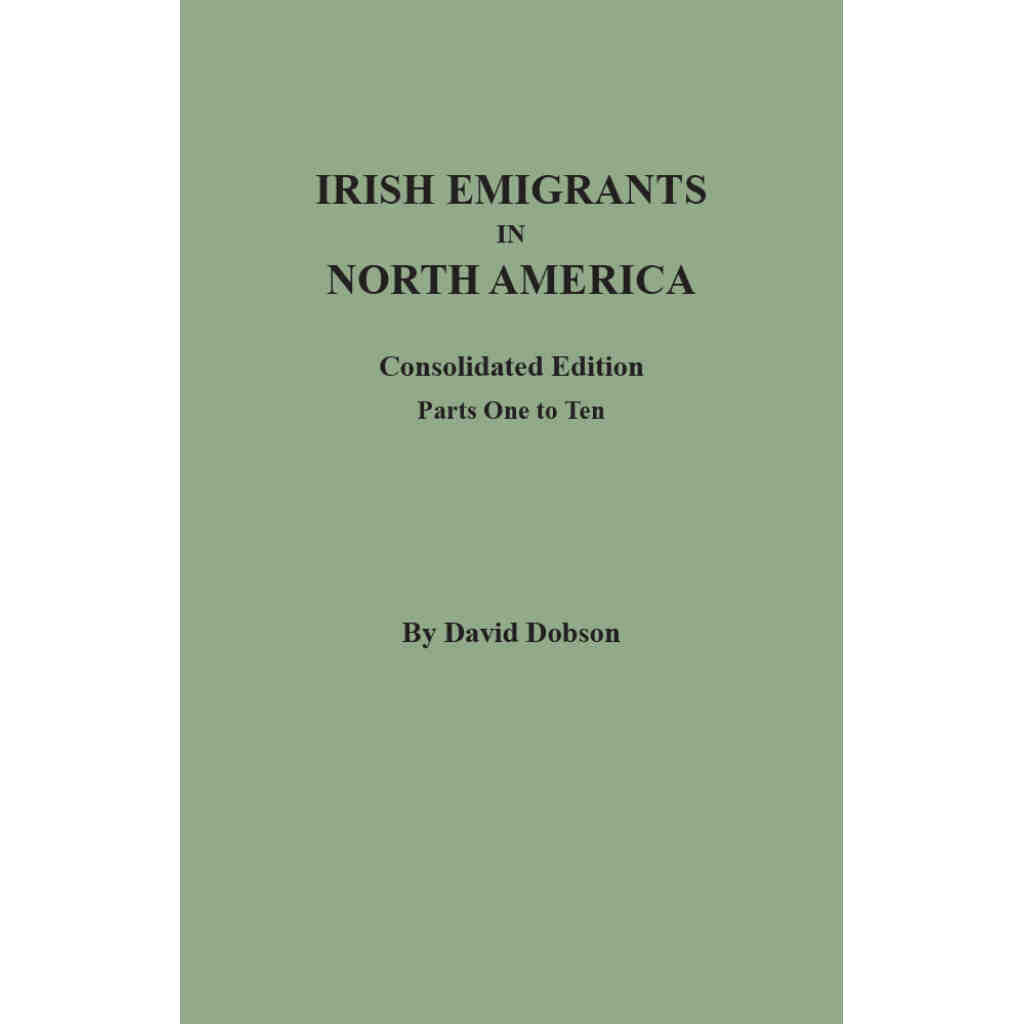
Irish Emigrants in North America: Consolidated Edition. Parts One to Ten – by Dr. David Dobson
This consolidated edition brings together all ten Parts of David Dobson’s series, Irish Emigrants in North America. A comprehensive index of names has been added to facilitate the reader’s search through all ten Parts. Moreover, the index identifies the many other Irish persons named in the emigrant profiles who could be overlooked by merely consulting the alphabetical arrangement of emigrants. While compiling the series, the author consulted reference material located in archives and libraries in the United States, Canada, Britain, Ireland, and the West Indies.
Emigration from Ireland to the Americas in the early modern period grew from a trickle to a torrent between the 17th century and the 19th century. Some emigrants left Ireland bound directly for the colonies as indentured servants. However, most Irishmen who settled in the Americas in the 17th century arrived as prisoners of war banished to the Plantations. Oliver Cromwell transported hundreds of Irish to islands in the West Indies, notably Barbados and especially Montserrat. Most 17th-century Irish found in the Americas were highly likely to be Roman Catholics who had opposed the English occupation of much of Ireland and who arrived as prisoners sold as indentured servants. By the end of the 17th century attempts at settlement by the Irish had occurred at locations stretching from Newfoundland to the Amazon River. One of them was Jane Lackey, from Carrickfergus, Ireland, who sailed aboard the Experiment of Liverpool, captained by Cavaleiro Christian, in August 1699.
This picture changed in the early 18th century when most Irish emigrants to America were Anglican, Quakers, or Presbyterians. There was substantial emigration from the north of Ireland by Presbyterians whose ancestors had settled there from Scotland during the Plantation of Ulster in the 17th century. These “Scotch Irish” found that they were treated as second-class citizens by the Anglican Ascendancy of Ireland, and, consequently, from 1718, they began to settle in the North American mainland’s thirteen colonies. An estimated 200,000, mainly Scotch Irish, had vacated the Emerald Isle by 1799, becoming one of the largest ethnic groups to settle in the British colonies in that century. One of these was Maurice Collins, an indentured servant who emigrated from Cork aboard the brig Pattie in 1773. Collins absconded from Abraham Holmes, a tavern-keeper at the Sign of the Bear in Donegal township, Lancaster County, Pennsylvania.
The expansion of transatlantic trade between Ireland and the Americas during the 18th and 19th centuries facilitated emigration. Also, from the late 18th century onwards, the British Army increasingly recruited Irishmen into its ranks. Consequently, many of these Irish veterans could be found settled throughout the British Empire. In the aftermath of the Napoleonic Wars in 1815, the British government settled thousands of former soldiers and their families in Canada. With a handful of exceptions, the vast emigration caused by the Potato Famine of 1846-1851 is beyond the scope of this work, which concerns itself with Irish emigration from the 17th century to about 1835. One such emigrant was William Armstrong, born 1783, an apothecary from County Meath, who departed from Dublin for New York on the Rover of New York, captained by George Bray, on September 27, 1805.
The author has arranged the list of roughly 8,500 emigrants alphabetically in each of the ten parts of this work by the individual’s surname and, in the majority of cases, provides most of the following particulars: age, name of ship, occupation in Ireland, reason for and the source of the information. Sometimes the entries also specify the emigrant’s place of origin in Ireland, place of disembarkation in the New World, date of arrival, and names or number of other persons in the household.
Editor’s Note: Researchers with Scots-Irish heritage who discover their immigrant ancestor in this new work, may be able to link that individual to one or more of the Ulster persons identified in our 2022 work, SCOTS-IRISH LINKS, 1525-1825: CONSOLIDATED EDITION. In Two Volumes.




